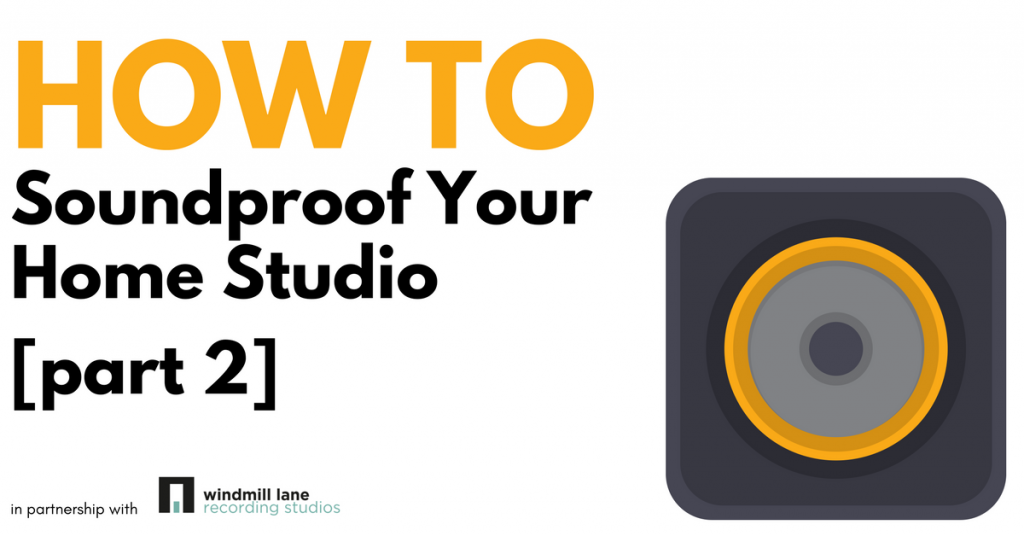
This second article in a two-part series focuses on soundproofing techniques. In part one we talked about how to stop unwanted sound escaping from your studio. In part two we are going to focus on how to keep any unwanted noise from getting onto your recordings.
Content supplied by our Studio Partners Windmill Lane Recording Studios.

So, audio engineering fans, after following the techniques we covered in our earlier blog, your home recording studio should be pretty well soundproofed and hopefully you can avoid too much disturbance to your family and neighbours!
Now we’re going to take a look at a few ways you can minimise sounds from getting onto your recordings – so they are nice and clean when you go to mix them.
Vocals
One of the most important tracks to keep clean is your lead vocal track. The first thing you can do if you are recording vocals at the same time as other instruments is to create a guide vocal.
Get the lead singer to record their vocal take with the rest of the band once or twice as a guide. Then use the guide track while everyone nails their own parts. The other musicians will be listening to the vocal track back in headphones and there won’t be any spill from the vocals. Also, your singer won’t be exhausted when they go to do the real thing – clever eh!
Then record the real vocal tracks separately. Recording the vocals separately will allow you to keep them free from unwanted noise.
Top studio mics, like the Neumann U87, are super sensitive so you’ll want to find a nice quiet spot to record the vocals. Use a reflection filter to help block out any background noise, reflections or echoes that might come off walls or other surfaces.
Oh, and if you happen to win the Lotto you could always treat yourself to one of these cool booths!
The Rhythm Track
A lot of music producers and audio engineers prefer to record the drum and bass track (aka the rhythm track) at the same time to create an authentic live and energetic feel to the song.
One approach is to use some acoustic screens to stop noise spilling from one instrument to the other.
You could also DI (direct input) the bass guitar into your DAW, as opposed to recording an amp, and give the bass player a set of headphones to listen in on. This way there shouldn’t be any spill from the bass guitar onto the drum track.
Guitar Amps
If you have screens for your drums you can use them on vocals, brass, guitar amps or any other instrument you are recording.
A useful little trick that audio engineers use, and it’ bit cheaper, is to drape their favourite duvet over the amp, leaving enough room for the mic to record the guitar. This helps stop other external noises getting onto the track.
Computer Noises
Computers have become a lot quieter but you don’t want the fan coming on during the middle of a great take and getting captured. Most of the big studios use something similar to an Isobox to keep the noise from computers and recording hardware off their tracks.
Having sound-proofed your space, if you have any acoustic panelling left you could always have a go at building your own isolation box!
Leave it in!
Sometimes a bit of spill isn’t the worst thing in the world and might just add a bit of character to the track. Many of the old classics that we love have all sorts of mistakes on them and it didn’t stop them becoming hits!
Audio Engineer and Music Technology Courses at Pulse College
Learn more about our Audio Engineering Courses or Contact Us to discuss any of our other courses in more detail! We hold regular Open Days where you can call in, get a better feel for the place and have a chat with the lecturers and students.
Thanks for checking our blog out and happy recording!
[openday]
FOLLOW US